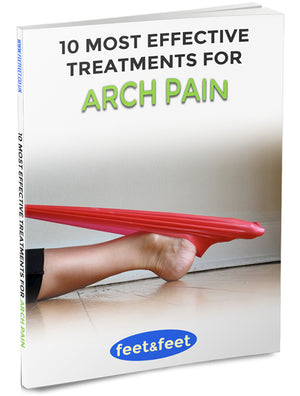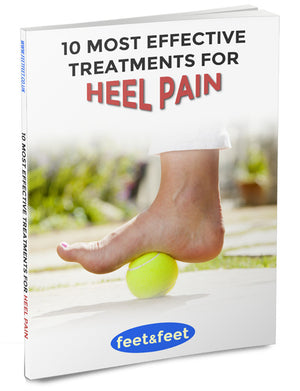How Do Compression Socks Work?

If you have ever suffered from leg pain or soreness, you may have come across or been recommended compression socks. Many people wonder what are compression socks, how do compression socks work and whether they are suitable for them. This article aims to answer all those questions and more.
What Are Compression Socks?
Compression socks are simply a form of supportive hosiery, which can provide support and improve the blood circulation in the lower legs and feet by adding mild pressure. They can come in a variety of sizes, shapes and colours. However, they will often be seen in a brownish or skin tone colour and will be fairly translucent in colour.
Doctors and healthcare providers often recommend compression socks to those who have leg problems or are at a risk of deep vein thrombosis (DVT). Otherwise pregnant women, athletes and people who generally have to spend a majority of their time on their feet may find that wearing compression socks can improve their level of comfort.
As the socks are made to add pressure, they may appear small on their own until they are stretched and worn on the foot. Normally compression socks will apply the most pressure around the foot and ankles, and gradually reduce the pressure upwards towards the knees.
Compression socks are often prescribed by doctors; otherwise they easily can be purchased from medical stores and pharmacies. These socks are available in multiple pressure grades; compression socks which are graded 11-20mmHg will provide a mild pressure, whereas 20-30mmHg socks can provide a more firm compression.
The socks also come in different sizes – knee high, thigh high and ankle length. Choosing the corrects socks is dependent on the reason for why you are wearing them.
If you are having treatments on your legs, thigh high lengths are often recommended as the involved veins will be throughout the full length of the leg. If compression socks are being worn for improving comfort and blood circulation, knee high length is recommended as they are easier to wear and individuals are more likely to wear them on a regular basis.

How Do Compression Socks Work?
Unlike traditional socks and stockings, compression stocks use stronger elastics so that there is significant pressure created on the legs, ankles and feet. They will feel the tightest around the ankles and will gradually become less constrictive as they go up towards the knees and thighs.
Compression socks work by compressing the surface veins, arteries and muscles, which forces any circulating blood through narrower channels. This results in an increase in arterial pressure, prompting more blood to return to the heart and reduces blood pooling in the feet.
Anything which impedes the blood flow such as problems with circulation or a reduction in movement can lead to blood pooling in the veins in the feet. This causes swelling of legs and feelings of achiness and fatigue. Purposely adding pressure to these areas can also improve the flow of lymph – the fluids which bathe the cells in the legs, which reduces tissue swelling.
A study from the American Journal of Nursing found that a large number of patients were incorrectly wearing their stockings. They found that many patients were being given either the wrong size or were wearing their compression socks wrinkled. This can cause excess pressure on the skin and lead to further unnecessary complications.
Many patients reported wearing the thigh high socks as uncomfortable whereas knee high socks were generally more likely to be perceived as comfortable. Therefore in order to obtain the benefits associated with wearing compression socks, they must be worn correctly throughout the day.
When to Wear Compression Socks
Doctors recommend people to wear compression socks for different reasons and medical conditions including:
- Tired and Aching Legs – This can be an indicator of blood flow slowing down in the legs, which can suggest early development of a DVT.
- Varicose Veins – Swollen and enlarged veins occurring on the legs and feet appearing blue or dark purple. These can cause painful venous inflammation and indicate venous weakness which cannot resolve on its own.
- Spider Veins – Small cutaneous blood vessels which appear blue or red through the skin.
- Deep Vein Thrombosis (DVTs) – When the blood flow decreases in the lower extremities and blood begins to pool in the legs. This leads to a higher risk of blood clot formation.
- Oedema – This is a condition in which opposing forces occur within small blood vessels and capillaries, leading to a net ultrafiltration of the plasma water into the soft tissues.
- Lymphedema – A condition in which an area of the body swells as a result of abnormal accumulation of lymph fluids. This occurs when there is interference in the regular drainage of lymph fluid back into the bloodstream.
- Chronic Venous Insufficiency – A condition in which the veins cannot efficiently pump deoxygenated blood back towards the heart.
- Economy Class Syndrome (ECS) – Compression socks have also been shown to prevent swollen ankles and feet which can occur during long periods of air travel. They can also reduce the risk of blood clots developing during long flights as a result of both the raised cabin pressure and long period of inactivity due to constricted space.
Other than these medical conditions, pregnant women can also benefit from wearing special maternity compression socks. Compression socks can help pregnant women by relieving symptoms associated with circulation problems.
Women who wear them throughout their pregnancy often report having higher levels of energy and less soreness in their legs and feet.
Athletes can wear sports compression socks which can delay muscle soreness – useful for allowing athletes in reaching their workout goals and pushing themselves and performance levels further.
Post-workout, compression socks can increase blood circulation within the feet, ankles and legs which helps to disperse lactic acid quicker and reducing feelings of muscle fatigue.

How Long to Wear Compression Socks For
If you have been prescribed compression socks as a result of a medical condition in which you have poor blood circulation, then you will probably need to wear them for several years or even the rest of your life. If you have a blood clot then you should be wearing the socks for at least two years.
Compression socks are often recommended following surgery when patients are placed on bed rest or have long periods of inactivity. Doctors will often advise that patients wear the socks as much as possible, until they are able to move around freely.
If you are wearing compression socks for a non-medical reason and for comfort – such as during pregnancy, travel or sports training – you can wear them for as long as you like during the daytime. Many healthcare professionals suggest that you experiment to see what is most comfortable for you and that you begin with a low compression level.
The Benefits of Compression Socks
Many patients often wonder what do compression socks do, yet they work by a very simple philosophy. Compression socks improve venous blood flow as a result of the applied pressure on the legs; this can help venous blood to flow back to the heart.
The improvement in blood flow means that less venous blood pools in the legs, leading to a lowered risk of blood clots developing and a reduction in leg swelling. There are been numerous medical studies which highlight the benefits of wearing compression socks. Such benefits include:
- A research study amongst flight attendants found that wearing light compression socks resulted in a reduction of tired, aching legs where discomfort and swelling was also reduced.
- Several studies found that wearing correctly fitted compression socks can prevent the development of post-thrombotic syndrome – a serious complication of DVT.
- Professionally manufactured and high quality compression garments have been shown to reducing the healing time for patients with leg ulcers.
- In cases of serious injury or following surgery where patients are unable to move their legs, medical grade compression socks have been shown to keep the leg veins in a better condition. This lead to a reduction in the risk of developing a DVT.
- Compression socks can provide the support equivalent to that of a bandage; however one of the main benefits of them is that they can be worn for a long period of time throughout the day without feeling uncomfortable or impractical.
- They’re a relatively low cost product but help with a wide range of conditions.



Comments
Leave a comment